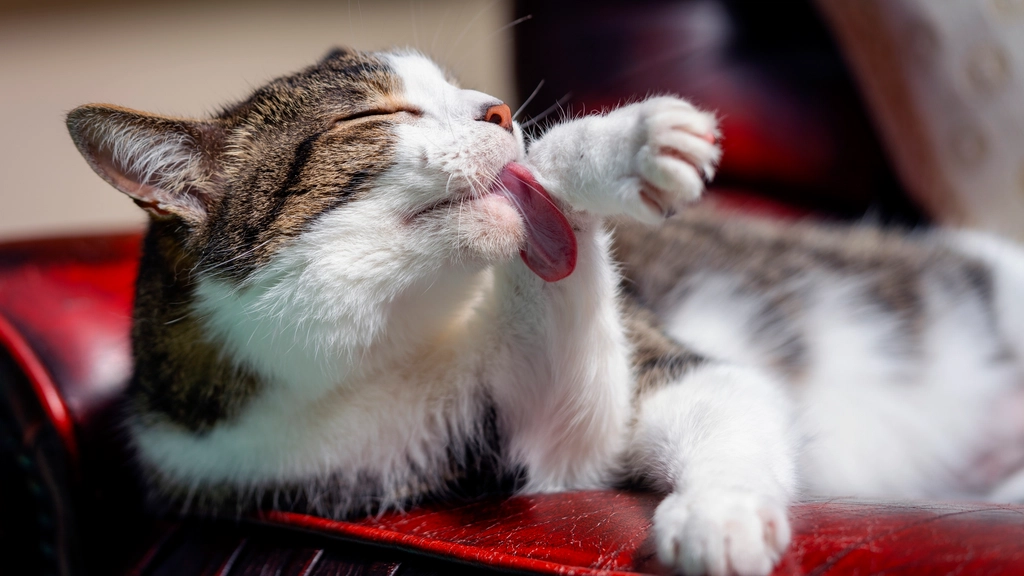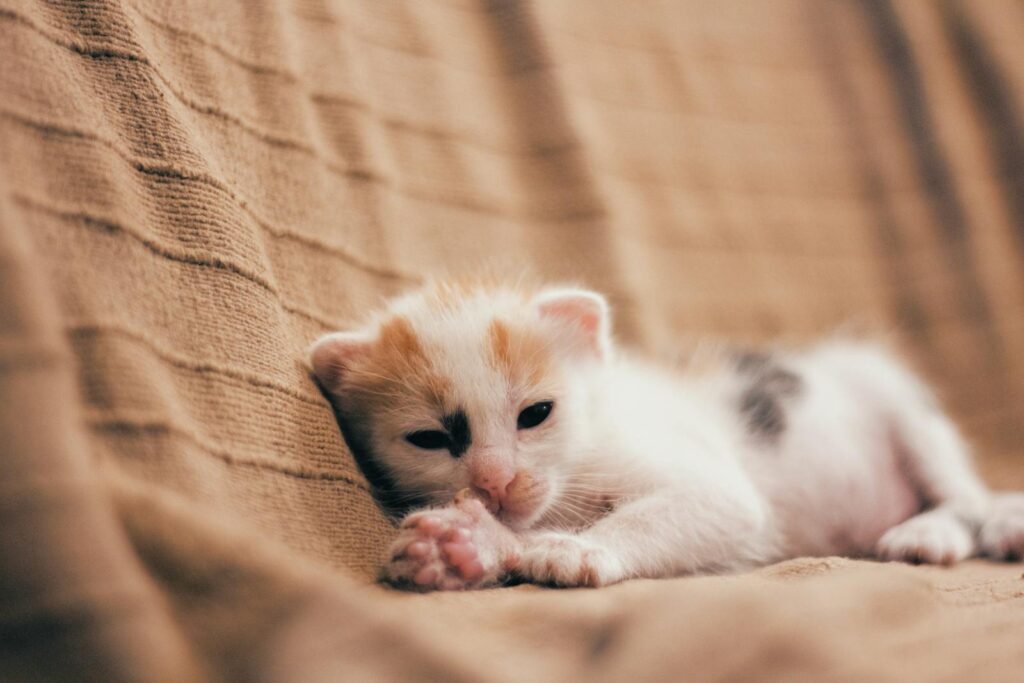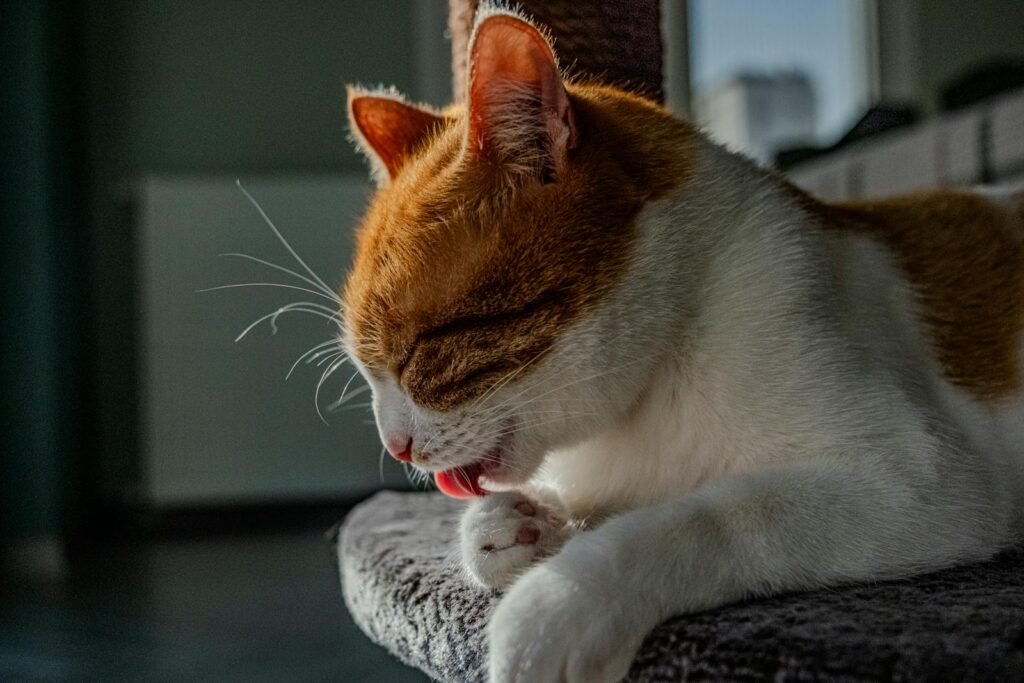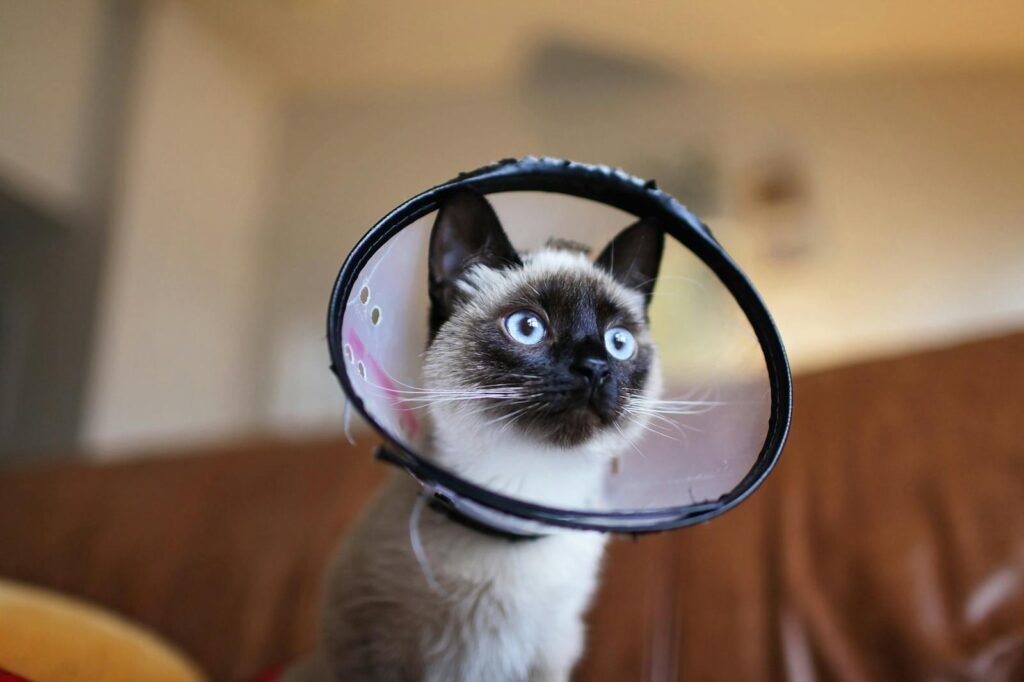Have you ever caught your cat obsessively licking the same patch of fur for what feels like hours? It can be heartbreaking to watch, especially when you notice bald spots or irritated skin. Over-grooming in cats isn’t just a quirky habit—it’s often a sign that something deeper is going on, from hidden stress to unseen medical problems. If you’re a cat lover, you know how much it hurts to see your furry friend struggle. The good news? There are real, practical steps you can take to help your cat break this cycle and return to their playful, purring self. Let’s dive into the world of feline behavior and discover how to stop your cat from over-grooming, one gentle step at a time.
Understanding What Over-Grooming Really Is

Over-grooming, sometimes called psychogenic alopecia, happens when your cat licks, chews, or plucks at their fur far more than is normal. While grooming is a natural and healthy behavior for cats, obsessive licking goes beyond keeping clean. You might notice patches of thinning fur or even bald spots, especially on the belly, legs, or sides. It’s easy to miss the subtle signs at first, especially since cats are naturally fastidious. But if you start seeing redness, sores, or unusual hair loss, it’s time to take a closer look. Over-grooming can be caused by a variety of factors, both physical and emotional. By understanding what’s behind this behavior, you can tackle it at its root and help your cat heal.
The Most Common Causes of Over-Grooming

There isn’t just one reason why a cat may start over-grooming. Sometimes, it’s a reaction to itching from allergies or parasites like fleas. For other cats, stress and anxiety are powerful triggers—think of it as their way of self-soothing, much like people biting their nails. Boredom, changes in the environment, or even a new pet can set off this behavior. Underlying medical issues, such as skin infections or hormonal imbalances, may also play a role. Pinpointing the cause can take detective work and patience. Every cat is unique, so it’s important to remember that what sparks over-grooming in one cat may have no effect on another.
Spotting the Warning Signs Early

Catching over-grooming early is half the battle. Look out for bald patches, broken fur, or areas that seem red and irritated. Sometimes you’ll even notice little tufts of hair around the house or on your cat’s favorite sleeping spot. Pay attention to your cat’s grooming habits—are they spending more time licking than usual, especially in the same area? If your usually chill cat is suddenly obsessed with cleaning their belly or legs, it’s time to take note. Remember, cats are masters at hiding discomfort, so you’ll need to be extra observant. Early intervention makes it much easier to stop the behavior before it becomes ingrained.
When to Visit the Veterinarian

If your cat’s over-grooming is causing fur loss or skin damage, don’t wait—schedule a vet visit. Medical conditions like flea infestations, allergies, or infections could be at play. Sometimes, over-grooming is a symptom of pain from arthritis or other internal issues. Your veterinarian can run tests, check for parasites, and rule out any underlying health problems. Bring notes or even videos of your cat’s behavior to share with the vet—this can help with diagnosis. It’s always better to err on the side of caution when it comes to your cat’s health. A quick check-up could save your cat from months of discomfort and help you find the right solution faster.
Ruling Out Parasites and Allergies

Parasites like fleas are a classic culprit behind itchy, over-grooming cats. Even indoor cats aren’t immune—fleas can ride in on shoes or other pets. Allergies, whether to food or something in the environment, can also make your cat’s skin crawl. Your vet might recommend flea treatments or allergy testing to narrow things down. Sometimes, a simple change in food or using a hypoallergenic detergent for your cat’s bedding can work wonders. Be thorough in treating your home and any other animals. It’s amazing how quickly a cat can bounce back once the itch stops.
Addressing Medical Conditions Behind the Behavior

Medical issues like fungal infections, hormonal imbalances, or autoimmune diseases can all lead to over-grooming. For example, hyperthyroidism or diabetes sometimes causes skin problems that make cats lick excessively. Skin infections from bacteria or yeast can also be at fault. Your vet will likely run blood tests or skin cultures to identify these problems. Treatment might involve medication, special shampoos, or dietary changes. It’s important to follow your vet’s instructions closely and finish any prescribed course of treatment. With the right care, most medical causes of over-grooming are manageable and sometimes even curable.
Managing Stress and Anxiety in Your Cat

Stress is a silent but powerful force in a cat’s life. Just like people, cats can develop nervous habits when they’re anxious. Moving to a new home, changes in your routine, or even loud noises can all make your cat feel unsettled. Try to keep your cat’s environment calm and predictable. Setting up cozy hiding spots or using pheromone diffusers can help create a sense of security. Spend extra time playing and cuddling with your cat if they seem stressed. Sometimes, just being there for them makes all the difference. If anxiety seems severe, your vet may suggest anti-anxiety medications or a consultation with a feline behaviorist.
Providing Environmental Enrichment and Stimulation

Boredom is another major trigger for over-grooming. Indoor cats, in particular, crave mental and physical stimulation. Offer a variety of toys—think feather wands, puzzle feeders, or even cardboard boxes. Rotate toys often to keep things fresh and exciting. Scratching posts and cat trees give your kitty a place to climb, scratch, and explore. Consider setting up a perch by the window so your cat can watch birds and squirrels outside. The more you engage your cat’s mind and body, the less likely they are to fixate on grooming. A busy cat is a happy cat, and a happy cat is much less likely to over-groom.
Creating a Predictable Routine

Cats are creatures of habit—they feel safest when their world is predictable. Try to keep feeding times, play sessions, and cuddle moments consistent each day. Avoid making too many changes at once, like rearranging furniture or introducing new pets without a gradual transition. If changes are unavoidable, ease your cat into them slowly. A simple, steady routine can do wonders for an anxious or bored cat. Over time, your cat will learn to trust that their needs will be met, which helps reduce the urge to self-soothe through over-grooming.
Using Pheromone Products to Soothe Your Cat

Synthetic pheromones mimic the natural calming scents that cats use to communicate with one another. Products like diffusers or sprays can help reduce anxiety-driven behaviors, including over-grooming. Plug these diffusers into rooms where your cat spends the most time, or spray pheromones on bedding and favorite spots. While not a magic cure, many cat owners notice subtle but real improvements. Pheromones work best when combined with other strategies, such as environmental enrichment and routine. These products are safe, easy to use, and can give your cat an extra sense of comfort during stressful times.
Trying Out Soothing Supplements and Diet Changes

Sometimes, a change in diet or the addition of calming supplements can help manage over-grooming. Omega-3 fatty acids, found in fish oil, are known to support healthy skin and reduce inflammation. There are also commercial supplements specifically designed to calm anxious cats, often containing natural ingredients like L-theanine or tryptophan. Talk to your vet before adding anything new to your cat’s diet to ensure it’s safe and appropriate. Occasionally, switching to a hypoallergenic or novel-protein diet can resolve underlying food allergies. Even small changes in nutrition can make a surprising difference in your cat’s comfort level.
Redirecting Your Cat’s Attention With Play

When you notice your cat starting to over-groom, gently distract them with a favorite toy or a quick play session. Interactive toys, like laser pointers or wand teasers, can be especially effective at breaking the cycle. Make playtime a regular part of your daily routine, aiming for at least two sessions of 10-15 minutes each. This gives your cat a healthy outlet for their energy and keeps their mind occupied. You might be surprised how quickly your cat forgets about grooming when they’re chasing a feather or pouncing on a ball. Play is not only fun—it’s also a powerful tool for behavior change.
Making the Home a Safe Haven

A peaceful, safe environment can do wonders for a cat prone to over-grooming. Give your cat plenty of places to hide or climb, like cozy beds, shelves, or covered cat condos. Minimize loud noises and sudden disruptions as much as possible. If you have more than one pet, make sure each animal has their own space and resources to reduce competition and stress. Some cats feel safer with background noise, like soft music or a white noise machine. The more secure your cat feels, the less likely they are to turn to over-grooming as a coping mechanism.
Dealing With Multi-Cat Household Dynamics

Living with other cats can sometimes trigger over-grooming, especially if there’s tension or bullying. Watch for signs of fighting, hissing, or resource guarding. Make sure each cat has their own food and water bowls, litter boxes, and sleeping spots. Use vertical space, like cat trees or shelves, to give everyone room to spread out. Gradually reintroduce cats if there’s been a recent conflict, using scent swapping and supervised visits. Harmony in a multi-cat home takes effort, but it’s essential for everyone’s wellbeing. A peaceful household means less stress and fewer reasons for your cat to over-groom.
Breaking the Cycle With Positive Reinforcement

Never punish your cat for over-grooming—it will only increase their stress. Instead, reward calm behavior with treats, praise, or gentle petting. If you catch your cat relaxing or playing instead of grooming, let them know you approve. Positive reinforcement teaches your cat that there are better ways to cope with their feelings. Consistency is key—be patient and generous with your praise. Over time, your cat will associate feeling calm and engaged with good things. This gentle approach not only reduces over-grooming but also strengthens your bond with your cat.
Recognizing When Professional Help Is Needed

Sometimes, despite your best efforts, over-grooming persists. Don’t be afraid to seek help from a veterinary behaviorist or certified cat trainer. These professionals have experience with even the trickiest cases. They can create a tailored behavior plan and provide support every step of the way. In some cases, medication may be necessary to help your cat break the habit. Asking for help isn’t a sign of failure—it’s a sign that you care deeply about your cat’s wellbeing. With expert guidance, many cats make remarkable recoveries.
Using Medical Aids and Barriers—With Caution

In severe cases, your vet may recommend temporary barriers like e-collars or soft surgical suits to prevent your cat from further harming their skin. While these aids are only a short-term solution, they give wounds time to heal while you address the underlying cause. Never use homemade solutions, as they can be unsafe and increase your cat’s stress. Make sure your cat still has access to food, water, and their litter box. These tools are most effective when combined with other strategies, like medication or behavioral interventions, and should always be used under veterinary supervision.
Tracking Progress and Being Patient

Recovery from over-grooming takes time and patience. Keep a journal to track your cat’s behavior, noting improvements or setbacks. Take photos of affected areas so you can see changes over time. Celebrate small victories, like less licking or new fur growth. If things aren’t improving, don’t hesitate to revisit your vet—sometimes a new approach is needed. Healing is rarely a straight line, but with persistence, most cats can break the over-grooming habit. Your love and attention are the most important ingredients in your cat’s recovery.
Building a Lasting Bond Through Care

Helping your cat overcome over-grooming is about more than just stopping a habit—it’s about strengthening your connection. When your cat feels safe, loved, and understood, they’re less likely to develop anxiety-driven behaviors. Spend quality time together every day, whether it’s through play, gentle brushing, or quiet cuddles. Listen to your cat’s cues and respect their boundaries. This journey can be challenging, but it’s also an opportunity to build trust and deepen your relationship. Sometimes, the best medicine is simply being there.
Celebrating Success and Preventing Relapse

Once your cat is on the mend, it’s important to keep up the good work. Continue providing enrichment, maintaining routines, and monitoring your cat’s skin and fur. Be alert for signs of stress or boredom that could trigger a relapse. Remember, prevention is easier than cure. Keeping your cat engaged and comfortable is the best way to ensure the over-grooming stays in the past. Celebrate your progress—every patch of regrown fur is a testament to your dedication and your cat’s resilience.
Final Thoughts on Helping Your Cat Heal

Over-grooming can be a tough challenge for both you and your cat, but it’s far from hopeless. With patience, love, and the right strategies, you can help your feline friend find relief and return to their happiest, healthiest self. Isn’t it amazing how much a little extra care can change a life?

Linnea is a born and bred Swede but spends as much time as possible in Cape Town, South Africa. This is mainly due to Cape Town’s extraordinary scenery, wildlife, and atmosphere (in other words, because Cape Town is heaven on earth.) That being said, Sweden’s majestic forests forever hold a special place in her heart. Linnea spends as much time as she can close to the ocean collecting sea shells or in the park admiring puppies.






